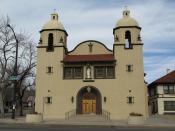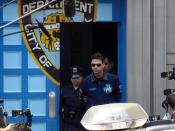It takes two to create a heresy: the heretic to practice his dissident beliefs, and the Church to condemn his views and define orthodox doctrine. This inevitable tension between dissent and order was the motor which drove the development of Christian thought. Heresy forced the Church to progressively define its doctrines and to anathematize opposing theological opinions. It is my intent in this paper to explore the role of the Church in stimulating the same heresies which they later fought bitterly against. I will argue that the motives of the heretic adjusted to the changes in the economic and social standing of the Church, and that heterodoxy grew in strength as the Church became less tolerant. Heresy in the early Middle Ages was very different from heresy beyond the eleventh century. The change in emphasis from the intellectually based heresies of the early church to the more social heresies was a gradual transformation from the sixth to the eleventh centuries.
Early movements such as Arianism and Gnosticism were very different from later practices like Catharism and Waldensianism (Lambert, 4).
Because heresy could not have existed on its own, it is best understood in its symbiotic relationship with orthodoxy. The inherent tension between two sources of authority-bishops and scholars-became a flash point for heresy in the early Middle Ages. What followed was many centuries of dissent, confusion, and hatred. The evolution of heresy can be divided up into three specific time periods. The first is defined as the time from the official founding of Christianity in the late first century, up to the year 451. It was in the year 451 that a committee at the Council of Chalcedon attempted to separate ancient heresy from medieval heresy. At the conference, church fathers attempted to settle basic theological issues once and for...


